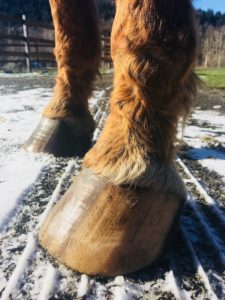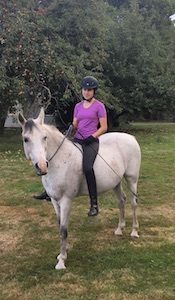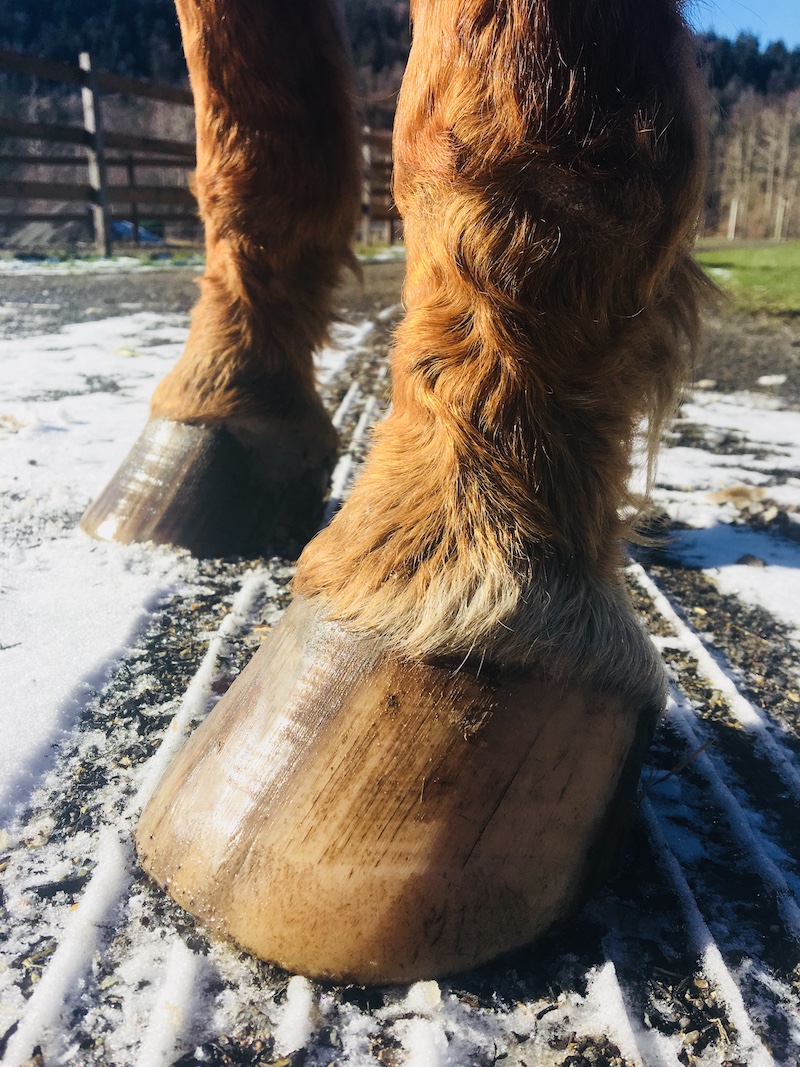Spring Brings Many Changes to Equine Hooves
By Aliena Hook
As winter’s snow and ice melts, horses crave the sweet, sugar and carbohydrate-loaded spring grass that pops up in abundance. Spring is notorious for some key changes in our horses’ feet, and those changes are caused by a variety of sources. Barefoot specialist and co-author of The Essential Hoof Book, Christina Cline offers insight into a few questions on why and how horses feet change with the seasons.

Diet is the first and most obvious adjustment for our horses as we change seasons. Cline says, “The horse’s diet goes from mostly hay-based in the winter to partial or even full pasture for many horses. This change in what the horse eats may affect growth rate and appearance of the hoof. In terms of appearance this can be the shine of the hooves, the way the frogs shed and harden or soften, and the growth rings of the hoof. Most importantly horses’ hooves tend to grow faster in the spring so regular and more frequent trimming is very important.”
Exercise also plays a role. Cline emphasizes, “Horses are typically more active in the spring, with more turnout, better weather, and more riding. This extra movement stimulates growth, increases wear, and changes the appearance of the sole and frog. The change of footing is a factor, too. With the ground drying out, horses with ample turnout won’t have quite such waterlogged feet.”
Speaking of waterlogged feet, springtime means ample opportunity for Spherophorus neaophorus bacteria to grow. For horses this takes the form of a blackish, fowl-smelling rot around the frog commonly known as thrush. Caused by excessive moisture, it is found in many horses throughout the winter and spring months as weather creates more swamp-like conditions in pastures and paddocks, especially here in the Northwest.
One of our biggest concerns in spring and early summer is laminitis. Laminitis is a painful inflammatory condition of the tissues (laminae) that bond the hoof wall to the pedal (coffin) bone in the horses’ hoof. The condition causes lameness, heat in the hooves, and in extreme cases can limit or end an equine’s riding career. Often it is associated with overweight ponies, but laminitis can develop for any horse at any time. Traditionally, it is linked to spring since that is when the highest sugar content is found in grass. Excess sugar causes a metabolic imbalance for the horse that eventually affects the hoof structure.
What are the early warning signs of laminitis? Cline notes, “An early warning is tender feet or the horse becoming ‘lazy’ and not moving as fast or as well as usual. Pronounced growth rings are also a warning sign that things aren’t quite right.” She continues by adding that if your horse “becomes tender-footed, has a hard time walking on hard ground or pivoting, or doesn’t want to move out normally, it may be a sign that the grass is just too much. A call to your veterinarian may be warranted.”
The good news is prevention is simple. “If your horse is getting more grass, increasing his exercise load can help keep the metabolism functioning at peak capacity, decreasing the risk that rich grass could pose a problem,” says Cline.
Introduce grass back into your horses’ diets slowly and keep a close eye on how they are moving to keep your equine partners happily “springing” into the riding season more easily.
Christina Cline’s and Susan Kauffman’s book, The Essential Hoof Book, contains more information on hoof health in spring and throughout the year with hundreds of beautifully detailed photos and diagrams to help owners understand and maintain their horses’ feet. The book is reviewed in this edition on page 21 and is available on Amazon and at many major book retailers.

Aliena Hook grew up in the Northwest and discovered horses at a young age while attending a birthday party. Beginning with her first rides and through many years of training, Aliena has strived to develop her own way of training based on natural horsemanship and focusing on the bond between humans and their horses.
When she’s not riding, she is writing. Aliena is currently working on her first book about her rescue horse Orion, and the issues surrounding the horse slaughter industry.
Aliena lives and works in Bellingham, WA and owns two Arabian geldings that she trains and learns from on a daily basis. She is a senior at Western Washington University, and hopes to pursue the careers of both trainer and writer in the near future. Contact her at [email protected] or through Facebook.






